


| 264D Main Street, Florence, KY 41042 (859) 594-4TEA (4832) |
Copyright 2008 Yesterday's Café and Tea Room. All rights reserved.
recommended that the teapot be warmed before preparing tea,
easily done by adding a small amount of boiling water to the pot,
swirling briefly, before discarding. The amount of tea to be used per
amount of water differs from tea to tea but one basic recipe may be
one slightly heaped teaspoon of tea for each teacup of water (8 oz).
The strength of the tea should be varied by changing the amount of
tea leaves used, not by changing the steeping time.
The temperature of the water and the steeping time has as large
effect on the final flavor as the type of tea used. In general, the less
the leaves were oxidized during processing, the lower the
temperature and the shorter the steeping time. For example, water
for green tea should be around 175 °F and the tea should only be
steeped for about 3 minutes. Hotter water will burn the green tea
leaves, producing a bitter taste. For black teas though, the water
should be added at the boiling point (212 °F) and steeped for about
5 minutes. The higher temperatures are required to extract the
large complex flavorful phenolic molecules found in the oxidized teas.
easily done by adding a small amount of boiling water to the pot,
swirling briefly, before discarding. The amount of tea to be used per
amount of water differs from tea to tea but one basic recipe may be
one slightly heaped teaspoon of tea for each teacup of water (8 oz).
The strength of the tea should be varied by changing the amount of
tea leaves used, not by changing the steeping time.
The temperature of the water and the steeping time has as large
effect on the final flavor as the type of tea used. In general, the less
the leaves were oxidized during processing, the lower the
temperature and the shorter the steeping time. For example, water
for green tea should be around 175 °F and the tea should only be
steeped for about 3 minutes. Hotter water will burn the green tea
leaves, producing a bitter taste. For black teas though, the water
should be added at the boiling point (212 °F) and steeped for about
5 minutes. The higher temperatures are required to extract the
large complex flavorful phenolic molecules found in the oxidized teas.
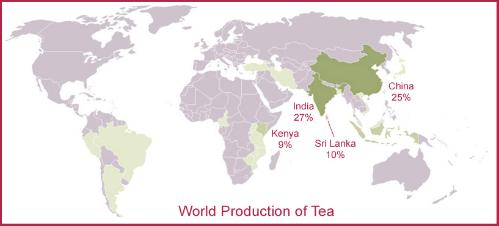
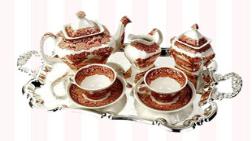
| Tea's world consumption easily equals all other manufactured drinks in the world - including coffee, chocolate, soft drinks, and alcohol - put together. |
All tea comes from the “camellia sinensis”, an evergreen shrub
harvested in over thirty countries around the world, though the
finest comes from just five: China, India, Sri Lanka (Ceylon), Taiwan
(Formosa) and Japan. Similar to wine, naming is often after the
region where the tea was produced, for example Assam after the
Assam region in India or Keemun after the Keemun region of China.
harvested in over thirty countries around the world, though the
finest comes from just five: China, India, Sri Lanka (Ceylon), Taiwan
(Formosa) and Japan. Similar to wine, naming is often after the
region where the tea was produced, for example Assam after the
Assam region in India or Keemun after the Keemun region of China.
While location, soil conditions, and climate impact the flavor
characteristics of the tea, how the leaves are processed will
determine their classifications as black, green, oolong and white. The
main difference between the many tea varieties is how much oxygen
the leaves are allowed to absorb during processing. Much oxidation
produces dark-colored black teas. Little oxidation results in green
tea. Unprocessed leaves are called white tea.
characteristics of the tea, how the leaves are processed will
determine their classifications as black, green, oolong and white. The
main difference between the many tea varieties is how much oxygen
the leaves are allowed to absorb during processing. Much oxidation
produces dark-colored black teas. Little oxidation results in green
tea. Unprocessed leaves are called white tea.
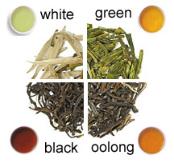
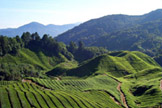
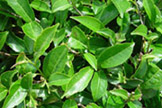
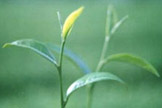
Tea Plantation
Mature Leaves
Young Leaf & Bud
Green teas, the earliest form of tea, are simply withered and dried
and are processed without oxidation. The resulting leaves infuse to
create a delicate and refreshing drink that is pale green/golden in
color. Prized for centuries for their health benefits, green teas are
an excellent choice as a relaxing afternoon cup.
White teas undergo the least processing of any of type of tea;
only the young leaves and buds are dried to remove all moisture
but preserve the delicate nature. Lighter in body than greens, a
white tea yields a refined infusion that is naturally sweet.
Red teas, more properly Rooibos, is not a true tea. The Rooibos
plant is a small shrubby bush that only grows in South Africa.
Available in non-oxidize and oxidized forms, it has a distinctive red
color with a unique taste which is very sweet and has a slightly
nutty flavor. Rooibos is also a caffeine-free alternative for tea and
can be served hot or cold.
and are processed without oxidation. The resulting leaves infuse to
create a delicate and refreshing drink that is pale green/golden in
color. Prized for centuries for their health benefits, green teas are
an excellent choice as a relaxing afternoon cup.
White teas undergo the least processing of any of type of tea;
only the young leaves and buds are dried to remove all moisture
but preserve the delicate nature. Lighter in body than greens, a
white tea yields a refined infusion that is naturally sweet.
Red teas, more properly Rooibos, is not a true tea. The Rooibos
plant is a small shrubby bush that only grows in South Africa.
Available in non-oxidize and oxidized forms, it has a distinctive red
color with a unique taste which is very sweet and has a slightly
nutty flavor. Rooibos is also a caffeine-free alternative for tea and
can be served hot or cold.
Black teas are withered, fully oxidized, and dried. They are the
most popular types of tea in American and yield a hearty, amber
colored brew. Often served with milk or sugar, Black teas can be
enjoyed all day - from a morning pick-up to an evening indulgence
after dinner.
most popular types of tea in American and yield a hearty, amber
colored brew. Often served with milk or sugar, Black teas can be
enjoyed all day - from a morning pick-up to an evening indulgence
after dinner.
Oolong teas are not fully oxidized, and
this processing imparts a lighter flavor
than black teas. They are characterized
by beautiful, large leaves, which are
suitable for multiple infusions. Oolong is
a cross between black and green tea in
color and taste. Stimulating flavor notes
make oolongs a great afternoon choice.
this processing imparts a lighter flavor
than black teas. They are characterized
by beautiful, large leaves, which are
suitable for multiple infusions. Oolong is
a cross between black and green tea in
color and taste. Stimulating flavor notes
make oolongs a great afternoon choice.
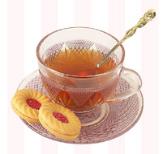
The traditional method of making a
cup of tea is to place loose tea leaves,
either directly, or in a tea infuser, into a
tea pot or teacup and pour hot water
over the leaves. After a couple of minutes
the leaves are usually removed again,
either by removing the infuser, or by
straining the tea while serving. It is also
cup of tea is to place loose tea leaves,
either directly, or in a tea infuser, into a
tea pot or teacup and pour hot water
over the leaves. After a couple of minutes
the leaves are usually removed again,
either by removing the infuser, or by
straining the tea while serving. It is also